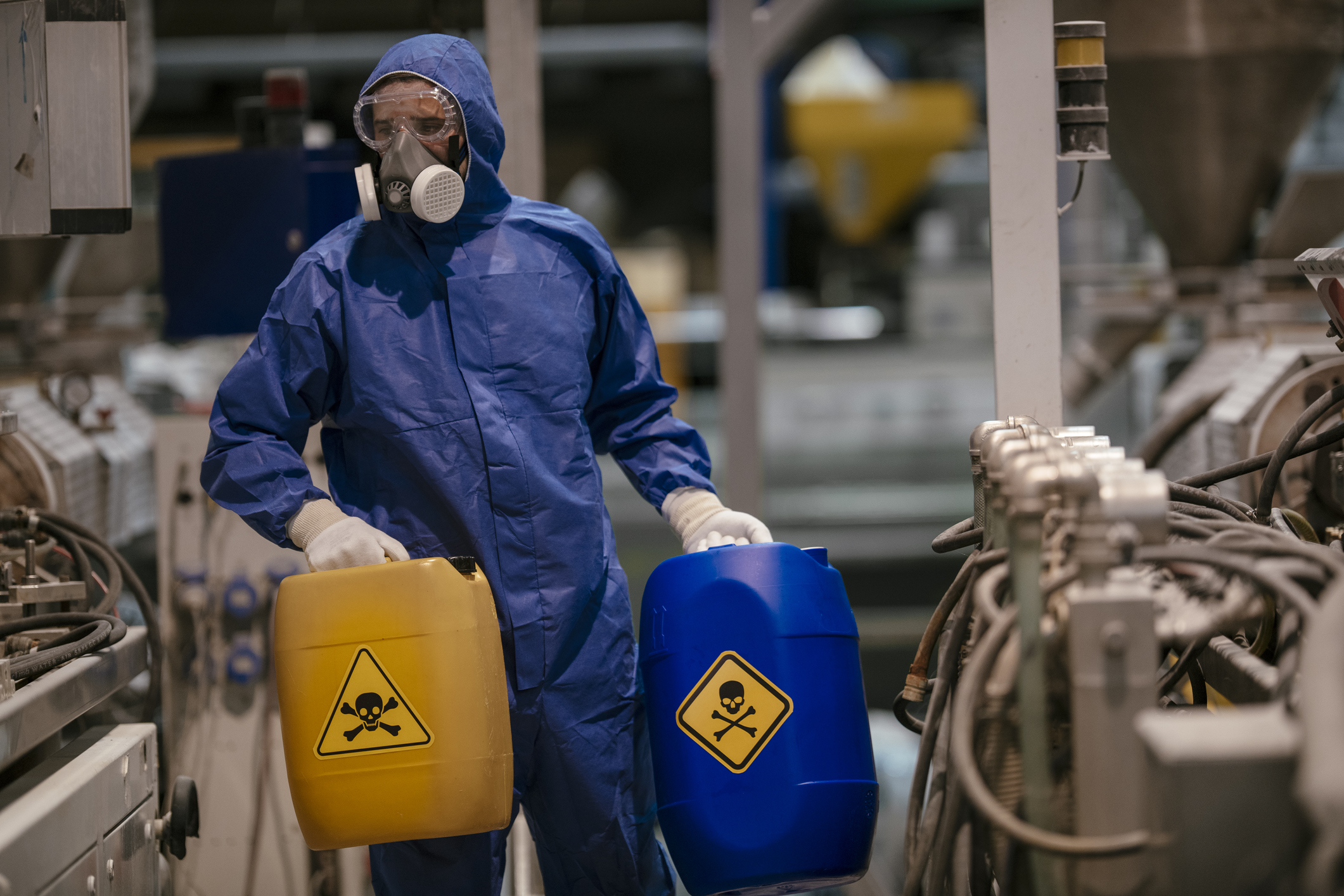Handling hazardous chemicals requires careful attention and adherence to safety protocols to prevent accidents and minimize risks to health and the environment. Whether you work in a laboratory, industrial setting, or even at home, understanding proper handling procedures is crucial for your safety and the safety of those around you. Let’s give you ways how to safely handle hazardous chemicals.
1. Know Your Chemicals
Before handling any hazardous chemicals, it is essential to familiarize yourself with the specific properties, hazards, and safe handling procedures of each chemical you work with. This information is typically found on Safety Data Sheets (SDS) provided by the manufacturer. SDS will detail the chemical’s toxicity, flammability, reactivity, and proper storage requirements.

How to Safely Handle Hazardous Chemicals
2. Use Personal Protective Equipment (PPE)
Always wear the appropriate PPE when handling hazardous chemicals. This may include gloves, goggles or a face shield, lab coat or protective clothing, and closed-toe shoes. PPE creates a barrier between you and the chemical, reducing the risk of exposure to the skin, eyes, and respiratory system.
3. Storage and Segregation
Store hazardous chemicals in designated areas that are secure, well-ventilated, and away from incompatible substances. Segregate chemicals based on their compatibility to prevent reactions if spills or leaks occur. Proper labelling of storage containers is crucial for easy identification and to ensure others are aware of the hazards present.
4. Handling Procedures
When handling hazardous chemicals, follow established procedures and guidelines meticulously. This includes using the appropriate equipment for transferring, mixing, or dispensing chemicals. Ensure all equipment is clean, in good condition, and suitable for use with the specific chemical.
5. Emergency Preparedness
Be prepared for emergencies by knowing the location of emergency equipment such as eyewash stations, safety showers, fire extinguishers, and spill kits. Understand the procedures to follow in case of accidental exposure, spillage, or fire involving hazardous chemicals.
6. Ventilation
Work in well-ventilated areas or use fume hoods when working with volatile chemicals or chemicals that produce hazardous fumes. Proper ventilation helps reduce exposure levels and ensures a safer working environment.
7. Avoiding Direct Contact
Minimize direct contact with chemicals as much as possible. Use tools such as tongs, scoops, or other handling equipment to manipulate chemicals rather than handling them with bare hands.
8. Regular Inspections
Regularly inspect containers, equipment, and PPE for any signs of damage or wear. Damaged equipment or containers can compromise safety and increase the risk of accidents or exposure.
9. Training and Education
Ensure all personnel handling chemicals receive adequate training and education on safe handling practices, emergency procedures, and the use of PPE. Regular refresher courses are beneficial to reinforce knowledge and update on new safety protocols.
10. Spill Cleanup Procedures
Have a clear understanding of spill cleanup procedures. Immediately contain small spills using appropriate absorbent materials and report larger spills to trained personnel for proper cleanup and disposal.
11. Disposal
Dispose of chemicals according to local regulations and guidelines. Improper disposal can lead to environmental contamination and legal repercussions.
12. Risk Assessment
Conduct thorough risk assessments before handling chemicals to identify potential hazards and implement appropriate controls to mitigate risks.
13. Communication
Maintain clear communication with coworkers and supervisors regarding the presence and handling of hazardous chemicals. This ensures everyone is aware of potential hazards and can respond effectively in emergencies.
14. Documentation
Keep accurate records of chemicals used, stored, and disposed of. Documentation helps track chemical inventories, monitor usage, and ensure compliance with regulatory requirements.
Conclusion
In conclusion, handling hazardous chemicals safely requires knowledge, preparation, and strict adherence to established safety protocols. By understanding the properties of the chemicals you work with, using appropriate PPE, and following proper handling and storage procedures, you can significantly reduce the risks associated with handling hazardous materials. Remember, safety should always be the top priority in any environment where dangerous chemicals are present.




